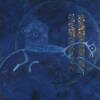Lost Cities and Buried Treasures: Exploring the Mysteries of Archaeological Excavations
Mythical creatures have captivated the imaginations of people across different cultures for centuries. From the majestic dragons of Chinese Have you ever been captivated by the allure of lost cities and the hidden treasures they hold? The thought of unearthing ancient civilizations and discovering their secrets is undeniably intriguing. In this article, we will delve into the fascinating world of lost cities and buried treasures, exploring the mysteries uncovered through archaeological excavations. Whether you're a history enthusiast or a student looking for inspiration for book reports online, the tales of lost cities and their buried treasures at https://specialessays.com/buy-book-reports/ offer a captivating journey into the depths of the past.
The Concept of Lost Cities
Lost cities have always captured our imagination, stirring visions of forgotten civilizations and their untold stories. These cities, once vibrant centers of life, became lost to time due to various reasons such as natural disasters, wars, or gradual abandonment. Examples like the legendary Atlantis, believed to have disappeared beneath the sea, or the ancient Roman city of Pompeii, preserved by layers of volcanic ash, continue to captivate us. These lost cities hold immense historical significance, providing valuable insights into the lives and cultures of our ancestors.
The allure and fascination surrounding lost cities lie in the idea of exploring the unknown. The mere thought of unearthing hidden streets, grand monuments, and artifacts from a bygone era ignites our curiosity and thirst for discovery. Lost cities embody the romanticism of an adventurous quest, where each excavation holds the potential to rewrite history and uncover ancient mysteries.
Famous lost cities like Machu Picchu, nestled high in the Andes Mountains, or the mysterious Angkor Wat in Cambodia, showcase the architectural brilliance of their time. These sites not only hold cultural and historical significance but also serve as testaments to human ingenuity and creativity. Studying these lost cities offers a glimpse into the past, allowing us to better comprehend the achievements and advancements of our ancestors.
The Secrets of Buried Treasures
Buried treasures hold immense historical and cultural importance, providing tangible connections to the past. From glittering gold artifacts to delicate pottery, these treasures offer glimpses into the lives and customs of ancient civilizations. Archaeological excavations have unearthed a wide array of treasures, including ancient texts and scrolls that reveal forgotten languages and literary traditions. Each discovery contributes to our understanding of history, filling in the gaps and adding new dimensions to our knowledge.
For example, the discovery of the Rosetta Stone in 1799 played a pivotal role in deciphering Egyptian hieroglyphics. This breakthrough allowed historians to unlock the secrets of one of the most fascinating ancient civilizations. Similarly, the discovery of the tomb of Tutankhamun in 1922 revealed a wealth of treasures and offered valuable insights into the opulence and religious beliefs of ancient Egypt.
The Art of Archaeological Excavations
Archaeological excavations are meticulous processes that require expertise and precision. They involve careful planning, mapping, and documenting each step of the excavation process. Archaeologists employ a variety of techniques, such as stratigraphy, to analyze the layers of soil and uncover artifacts in a chronological order. Tools like trowels, brushes, and sieves are used to delicately uncover and recover artifacts without damaging them.
The importance of proper excavation methods cannot be overstated. By following established protocols, archaeologists preserve the integrity of the artifacts and their context within the site. This context provides crucial information about the purpose, function, and significance of the discovered items. Additionally, by meticulously recording the excavation process, researchers create a comprehensive record that allows for further analysis and interpretation in the future.
Uncovering the Mysteries
Archaeological excavations play a pivotal role in unraveling the mysteries associated with lost cities and buried treasures. Through their meticulous work, archaeologists piece together the fragments of the past, striving to answer the unanswered questions that have perplexed historians for centuries.
The deciphering of ancient scripts has been a significant breakthrough in uncovering the secrets of lost civilizations. For instance, the decipherment of cuneiform script by scholars such as Henry Rawlinson and the subsequent exploration of ancient Mesopotamian sites opened up a wealth of knowledge about the Sumerians, Akkadians, and Babylonians. These revelations transformed our understanding of the development of writing, law, and early urban societies.
Archaeological excavations have also brought to light ancient civilizations that were previously unknown or shrouded in myth and legend. The discovery of the Indus Valley Civilization in the 1920s revolutionized our understanding of early urban settlements in the Indian subcontinent. Similarly, the unearthing of the ancient Mayan city of Tikal in the dense jungles of Guatemala provided valuable insights into the complex society and architectural marvels of the Mayans.
Challenges and Risks in Archaeological Excavations
Excavating ancient sites is not without its challenges. Archaeologists face numerous obstacles, both logistical and technical, in their quest to uncover the mysteries of lost cities and buried treasures. Difficult terrains, limited funding, and the sheer complexity of large-scale excavations can pose significant challenges.
Preservation is a constant concern during archaeological excavations. The delicate nature of artifacts requires careful handling and storage to prevent deterioration. Proper preservation techniques, such as controlled environments and conservation treatments, are employed to ensure the long-term survival of these treasures.
Ethical excavation practices are of utmost importance. The destruction caused by looting and illegal excavation activities is irreparable. Looters not only steal valuable artifacts but also destroy the contextual information surrounding them, rendering them nearly worthless to researchers. Raising awareness about the importance of preserving archaeological sites and implementing stricter regulations are crucial in safeguarding our historical heritage.
Contemporary Techniques and Technologies in Archaeology
The field of archaeology has witnessed remarkable advancements in recent years, thanks to modern technologies. Remote sensing techniques, such as aerial photography and satellite imagery, allow archaeologists to identify potential archaeological sites and map large areas with precision. LiDAR (Light Detection and Ranging) technology uses laser pulses to create detailed topographic maps, revealing hidden structures beneath dense vegetation or sand dunes.
3D scanning and photogrammetry have revolutionized artifact analysis and preservation. These techniques create high-resolution digital models of artifacts, allowing for detailed examination and analysis without physically handling the objects. They also facilitate virtual preservation, ensuring that fragile or rare artifacts are accessible to researchers and the public while minimizing physical damage.
Lost Cities and Buried Treasures in Popular Culture
The allure of lost cities and buried treasures has permeated popular culture, inspiring countless books, movies, and games. From Indiana Jones to Lara Croft, these fictional characters embody the adventurous spirit of exploring ancient ruins and uncovering hidden treasures. These tales of adventure and discovery captivate our imaginations and fuel our fascination with the unknown.
Popular media featuring lost cities and buried treasures have not only entertained us but also had a profound impact on public interest in archaeology. Books like "The Lost City of Z" by David Grann and "The Lost City of the Monkey God" by Douglas Preston bring real-life archaeological expeditions to the forefront, captivating readers with tales of exploration and intrigue. Movies like "National Treasure" and "The Mummy" series create thrilling adventures while highlighting the importance of preserving our historical heritage.
However, it is essential to maintain a balance between entertainment and historical accuracy in media portrayals. While fictional stories ignite our imagination, it is crucial to recognize that real-life archaeological excavations require meticulous research, expertise, and adherence to ethical standards. Separating fact from fiction allows us to appreciate the genuine complexities and significance of archaeological discoveries.
Conclusion
Lost cities and buried treasures continue to captivate our imagination, offering a glimpse into the depths of history. Through archaeological excavations, we have unraveled enigmas, expanded our knowledge, and preserved the remnants of ancient civilizations. The allure and significance of these discoveries remain as strong as ever, driving ongoing exploration and excitement. As we continue to unearth the mysteries of lost cities and discover the treasures that await us beneath the layers of time, let us embrace the wonder and learn from the past to shape a better future.





















